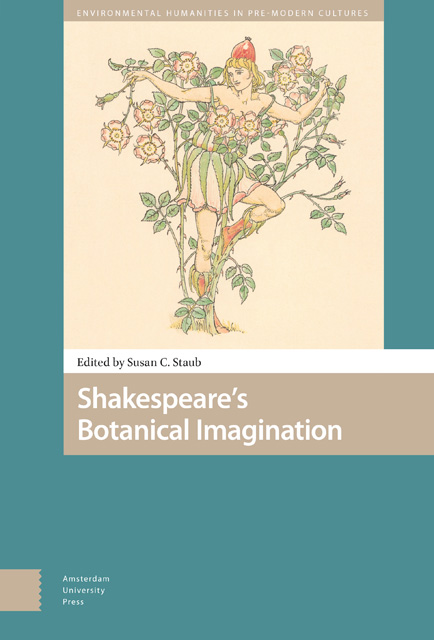10 - The Botanical Revisions of 3 Henry VI
Published online by Cambridge University Press: 17 October 2023
Summary
Abstract
This analysis investigates the differences in botanical representation between the version of 3 Henry VI printed in the 1623 First Folio and the earliest printed version of the play, the 1595 octavo The True Tragedy. This comparison of textual variants demonstrates that the botanical stylings of the folio text are considerably more extensive and elaborate than those of the octavo. These changes range from added passages to single-word variants, suggesting a comprehensive program of revision aimed toward expanding the botanical register of the play. Botanical revisions to the text also point toward an attempt at harmonizing the play with others in the first history tetralogy, giving it a more serial and connected character when grouped among other history plays in the First Folio.
Keywords: textual criticism, textual variants, history play, botanical imagery, critical plant studies
As Caroline Spurgeon observed nearly a century ago, Shakespeare’s early histories are filled with botanical imagery, the growth and decay of plants being “the most constant running metaphor and picture in Shakespeare’s mind in the early historical plays as a whole.” More recently, Jean Feerick has returned to this terrain, drawing attention to the way that many Elizabethan plays associate English soil with the flesh of noble bodies, often depicted vegetally as they are rhetorically uprooted, plucked, pruned, and weeded. Not yet having received sustained attention for its elaborate botanical imaginings, however, is the third play of Shakespeare’s first history tetralogy, 3 Henry VI. Like the other plays in the tetralogy, 3 Henry VI dramatically portrays the years-long affair of the so-called Wars of the Roses, the third part focusing on the shifting tides of power between the houses of York (emblem: white rose) and Lancaster (emblem: red rose). The Yorkists are led by the Duke of York (Richard Plantagenet) and his sons, including Richard, Duke of Gloucester (who will become King Richard III). The house of Lancaster is ostensibly led by King Henry VI, though in practice it is Queen Margaret who commands the Lancastrian army. In addition to featuring characters physically wearing white and red roses, the play makes numerous botanical references. From the elaborate conceit of a throne-impeding “thorny wood” in Gloucester’s famous soliloquy, to the slain Duke of York being compared to a fallen oak tree, 3 Henry VI deploys such images cannily and consistently.
- Type
- Chapter
- Information
- Shakespeare's Botanical Imagination , pp. 243 - 266Publisher: Amsterdam University PressPrint publication year: 2023



